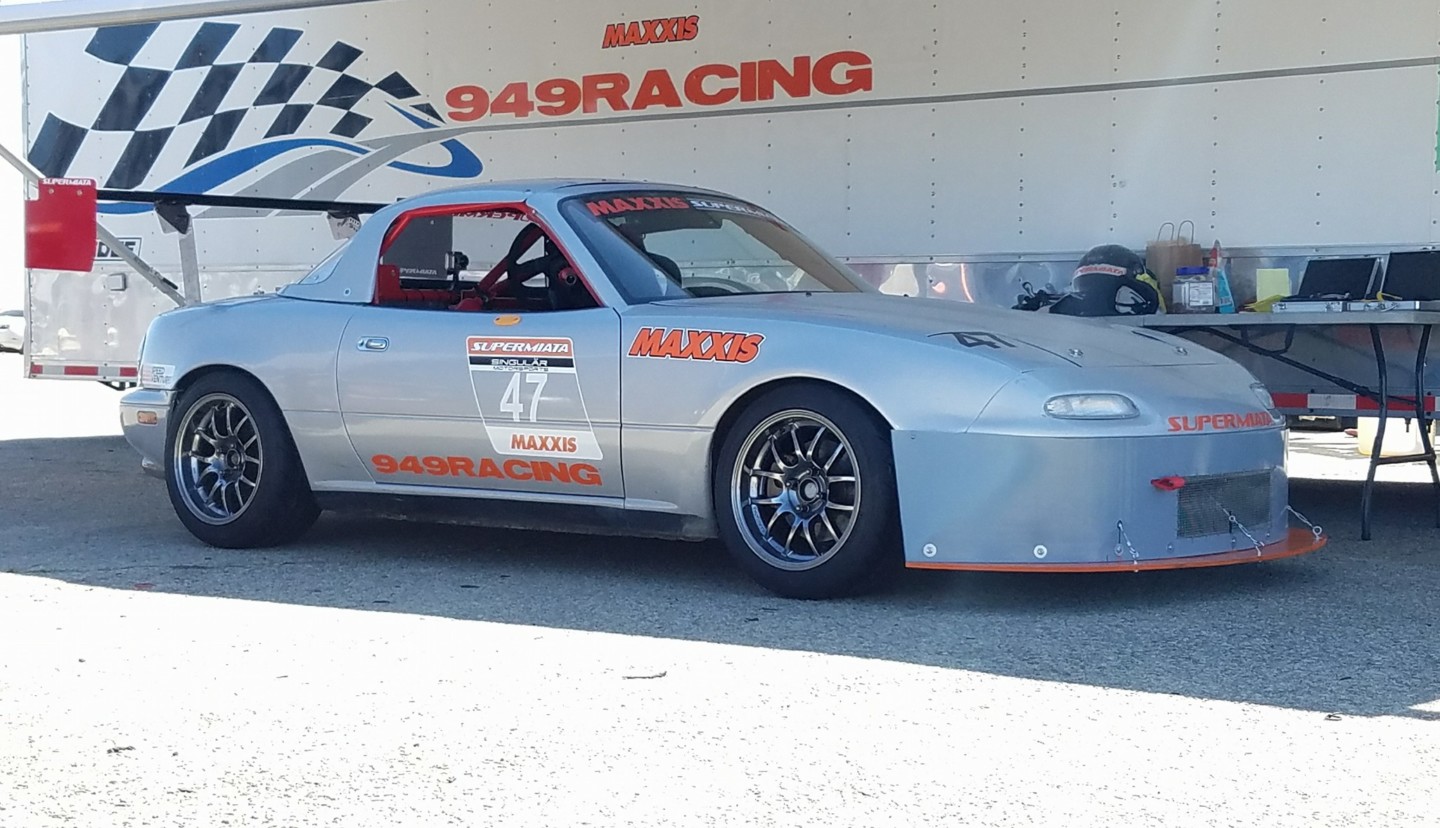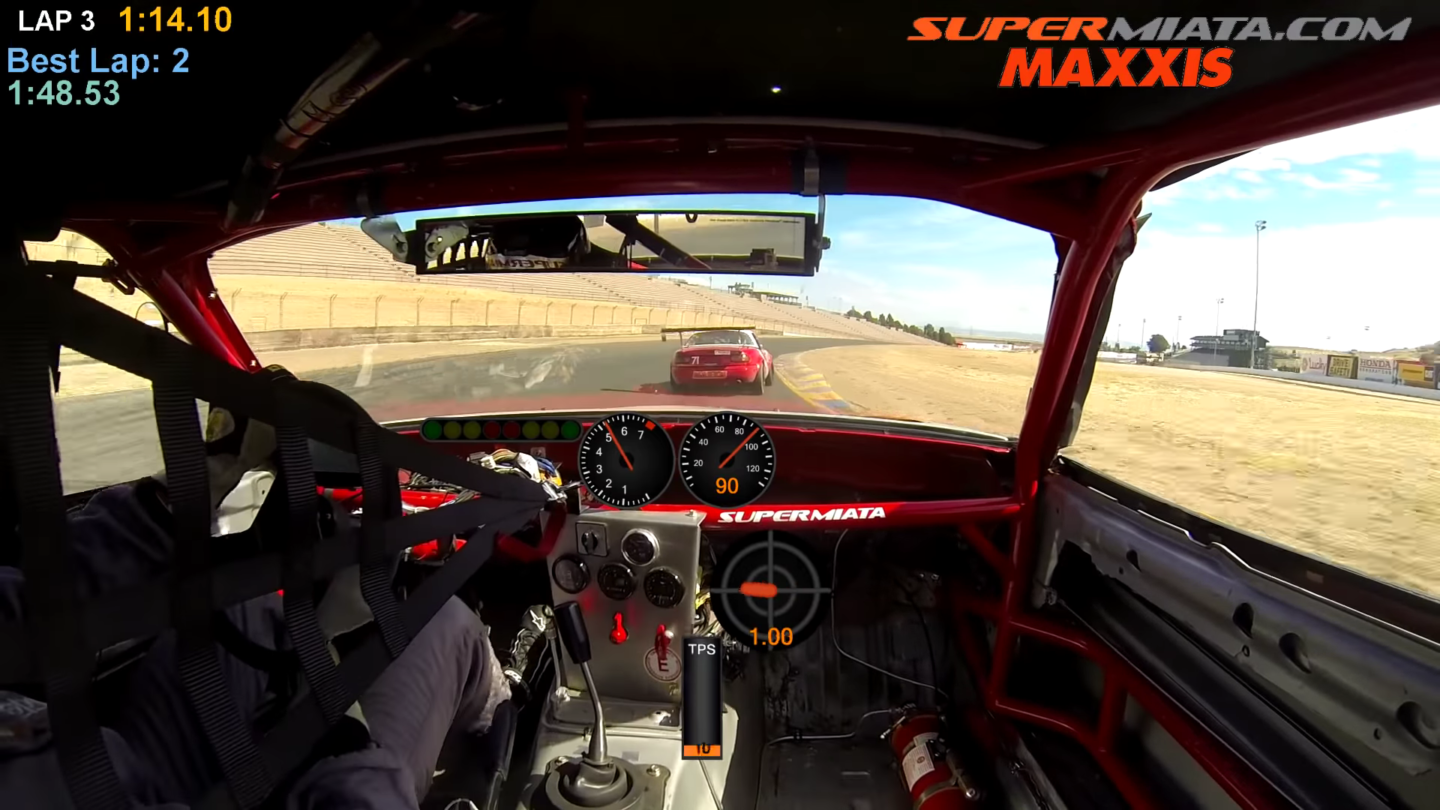It’s a pity that Supermiata S1 is now a defunct category. Building upon the successful S2 class, one which pitted 140-horsepower normally-aspirated Miatas against each other, S1 introduced forced induction, mild aerodynamic grip, and a surprisingly reliable platform. The resulting grip and power allowed these “turbos and wings” car to lap ten seconds faster than their atmospheric siblings.
Though there are obviously some aero elements here, the S1 Supermiata was designed to be a low-drag, low-downforce car. “We wanted to keep things simple and add a bit of aero grip,” said Emilio Cervantes, the series founder and President of 949 Racing. The notable additions were a single-element wing, a front air dam, and a front splitter no wider than the body.
To keep running costs low, S1’s rulebook was stringent but not overly so. The critical takeaways were: any 1990-2005 Miata chassis, a maximum of 220 horsepower/torque, and a minimum weight of 2,300 pounds.
More Power, More Considerations
The torque produced by the Trackspeed Engineering turbo kits made spinning the relatively narrow, hard 245-section Maxxis RC-1 tires in the lower gears possible. Helped by the responsive BorgWarner EFR turbo, the engine’s broad curve and linear power delivery made it possible to generate real acceleration from low revs. Interestingly, this would force drivers to use Third and Fourth gear to limit wheelspin in tighter corners.

With 200 lb-ft of torque at 3,500 rpm, the Supermiata required a different touch than its normally-aspirated sibling did.
The S1 Supermiata’s torque, wider tire, and minimal aero grip amounted to more speed than its creators anticipated. “We ended up lapping three seconds faster than we anticipated on our first outing,” recalls Cervantes. With a set of stickier tires, the S1 was capable of a 1:45 at Sonoma Raceway—the circuit where this battle took place.
A Diagonal Driving Style
To achieve those sorts of times, both Cervantes and Andrew Kidd, President of Trackspeed Engineering, had to alter their approach from that used in a 120-horsepower Miata—a vehicle which isn’t as traction-limited at slower corner exits. With the turbocharged engine, more time was found in deploying the power early and cleanly, and this necessitated a milder corner entry to avoid oversteer and the attendant throttle delay. With some maintenance throttle to spool the turbocharger and the right lines, they’d have a tidy exit at the expense of a lengthened mid-corner phase.
Cervantes, the driver of the camera car, uses diamond lines to leave the slower corners without wheelspin. This is illustrated in Turn 2, where he uses the painted lines to help rotate his car into the corner (4:14). This approach, in conjunction with a sharper turn-in, means Cervantes completes the bulk of his turning prior to Turn 2’s crest, which often upsets a laterally loaded car.
There, Kidd has a tendency to turn in earlier and slide across the top of the crest. Though this has defensive advantages, it also means Kidd must wait to get to the exit curb before he can use full throttle. For this reason, Cervantes can just about close the gap leaving this bend.
The Effects of Balance
As Cervantes’ car is a little more understeer-prone, he has to nurse the front tires slightly. To do this, he brakes earlier and releases the brakes more gradually. He also turns in earlier through faster corners like 8 and 8A, where wheelspin is no longer an issue. Kidd, enjoying a more neutral car, shows some of his karting background by turning late into Turn 8A (5:23) with noticeable yaw. “You can clearly see the broad side of his car there,” Cervantes chuckles.
While Cervantes could match Kidd in the straightline braking zones and some corner exits, Kidd’s aggressive driving style, defensive lines, and spectacular style through the quick stuff kept him ahead—but only just.

























